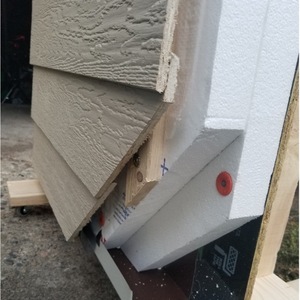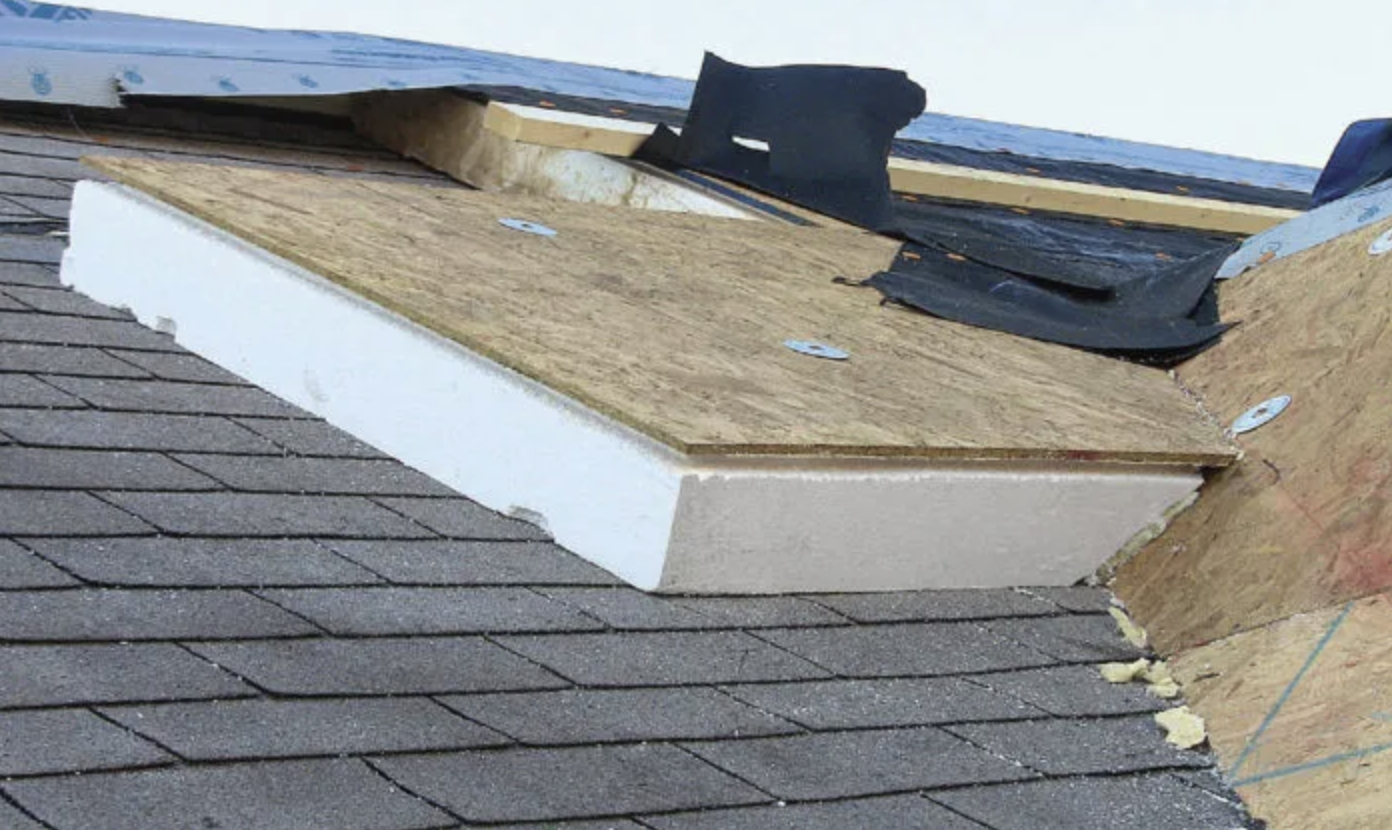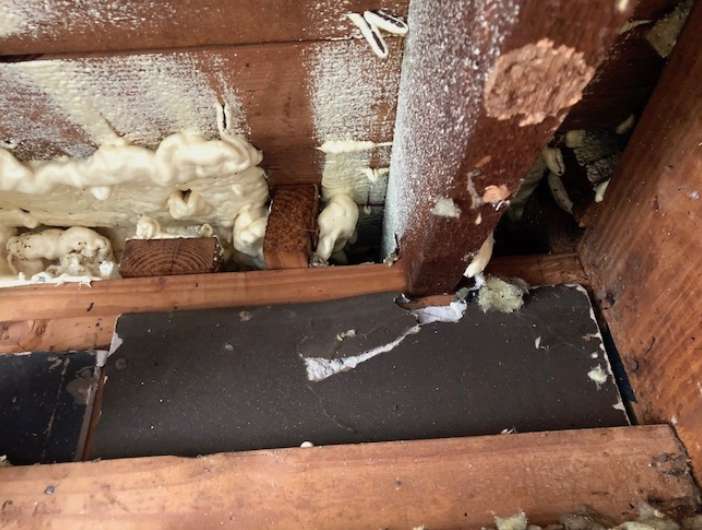
When home buyers purchase a house that was built in the 19th century, it’s usually no surprise that the structure’s energy efficiency isn’t up to modern standards. It’s more surprising, though not uncommon, to find a house built 50 years ago that isn’t up to modern standards. Such is the case for “knh1vt,” who bought a 1974 ranch house in Vermont (Climate Zone 6A).
Blower door tests confirmed knh1vt’s suspicions that the house—which had been converted to a Cape, at some point, making it a 1-1/2-story building—had air leaks aplenty, even after he replaced several leaky garage and patio doors. When an ice dam caused a torrent of water to pour into the kitchen, he opened up the (new) roof over the main area of the house to find that the fiberglass batts were sodden.
He reports that the roof and three of the four 2×4 walls have since been air-sealed with closed-cell spray foam, in addition to general air-sealing in the half-floor space. But the north wall has remained untouched, and is likely the source of the cold drafts that blow through the house on windy days.
He plans to tear out the drywall on that last wall and add new insulation, but is not sure which type to use. He’s reluctant to use spray foam again because of environmental concerns, and batts raise too many questions in his mind. He writes, “Unfortunately, the contractors I have spoken to either tout the insulation they install (foam, typically), or say something like, ‘You need air in your house. Don’t worry about it.'”
So, the question is: What’s the right insulation and best air-sealing strategy for this cold-climate energy upgrade?
Either get surgical, or tear it down
Though most…
Weekly Newsletter
Get building science and energy efficiency advice, plus special offers, in your inbox.

This article is only available to GBA Prime Members
Sign up for a free trial and get instant access to this article as well as GBA’s complete library of premium articles and construction details.
Start Free TrialAlready a member? Log in















0 Comments
Log in or become a member to post a comment.
Sign up Log in